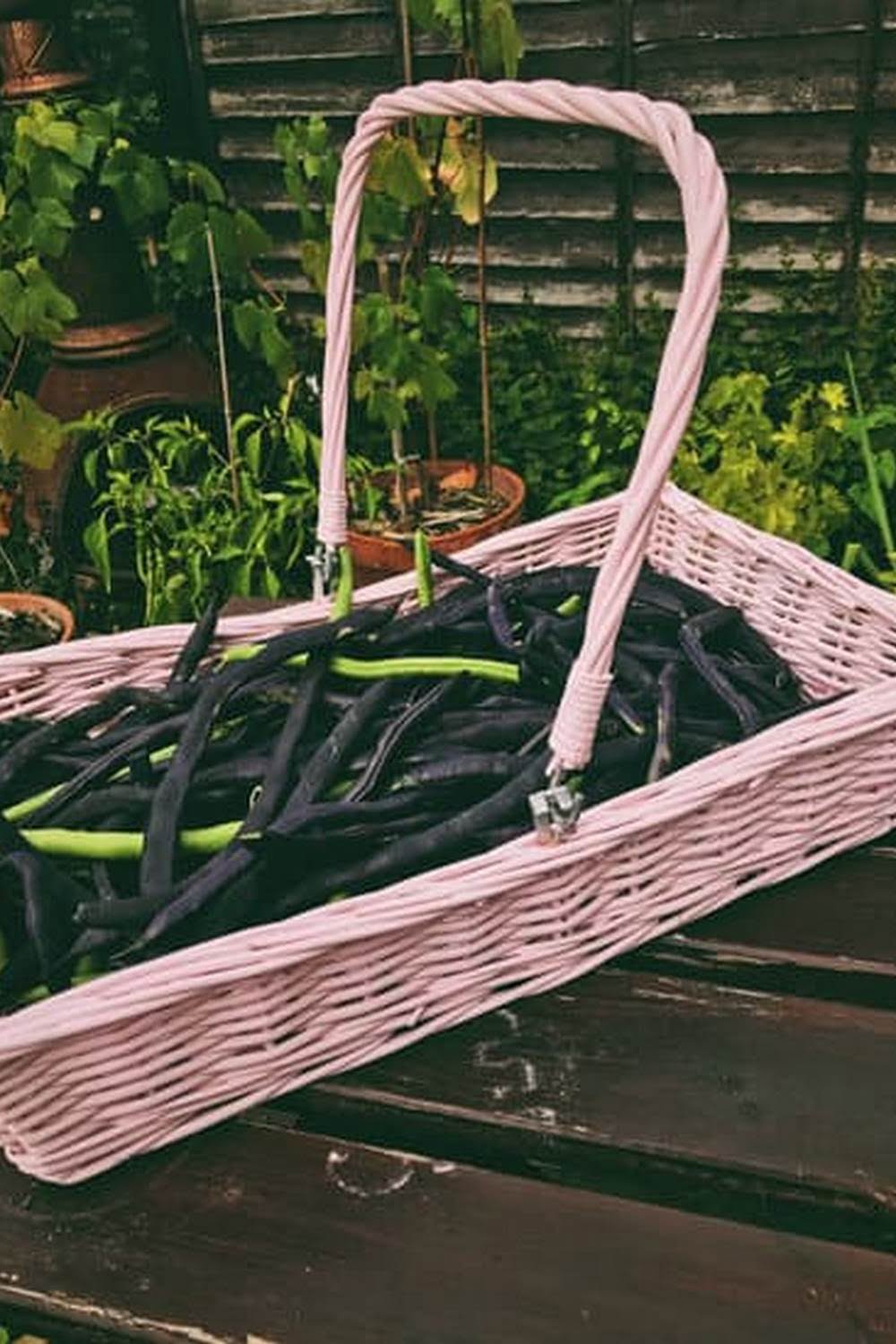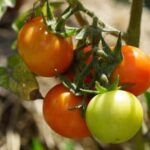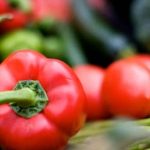Home gardening in Wisconsin offers a rewarding opportunity for residents to cultivate their own fresh and healthy produce right in their backyard. For home gardeners in Wisconsin, the choice of vegetables to grow is abundant, but it is essential to understand the specific climate conditions and planting zones of the state. From understanding the planting zones to managing pests and diseases, this article will provide valuable insights and essential tips for home gardeners looking to grow vegetables in Wisconsin.
Wisconsin’s climate presents a unique set of challenges and opportunities for growing vegetables, making it important for home gardeners to choose the best varieties suited for the region. Understanding the state’s planting zones is crucial for determining which vegetables will thrive in specific areas. By selecting the right vegetables based on the climate and planting zones, home gardeners can maximize their chances of success and enjoy a bountiful harvest.
In addition to exploring the best vegetables to grow in Wisconsin’s climate, this article will also provide valuable information on essential tips for starting a vegetable garden at home. From choosing the right soil and fertilizers to managing pests and diseases specific to Wisconsin vegetables, home gardeners will gain practical insights into cultivating a successful vegetable garden.
With an abundance of community resources and organizations available for support, Wisconsin home gardeners can tap into a network of fellow enthusiasts and experts passionate about growing their own produce.
Best Vegetables to Grow in Wisconsin’s Climate
When it comes to growing vegetables in the climate of Wisconsin, there are several options that thrive in this region. Whether you’re a beginner or an experienced gardener, choosing the right vegetables to grow can make a significant difference in your garden’s success. Here are some of the best vegetables for home gardeners in Wisconsin to consider:
Root Vegetables
Root vegetables such as carrots, beets, and radishes are well-suited for Wisconsin’s climate. These cool-weather crops can be planted early in the spring and harvested throughout the growing season. With proper care and maintenance, root vegetables can yield a bountiful harvest, making them an excellent choice for home gardens in Wisconsin.
Leafy Greens
Leafy greens like lettuce, spinach, and kale are also great choices for Wisconsin gardeners. These vegetables thrive in cooler temperatures and can even withstand light frosts, allowing for an extended growing season. With their high nutritional value and versatility in the kitchen, leafy greens are a popular choice for many home gardeners in Wisconsin.
Brassicas
Cabbage, broccoli, and Brussels sprouts are part of the brassica family of vegetables that do well in Wisconsin’s climate. These cool-weather crops can be started early in the spring or grown as fall crops, providing a continuous supply of fresh produce throughout the year. With their resistance to cold temperatures and relatively low maintenance requirements, brassicas are an excellent addition to any vegetable garden in Wisconsin.
By considering these vegetable options, home gardeners in Wisconsin can cultivate a diverse and productive garden that thrives in this unique climate. Whether you’re interested in root vegetables, leafy greens, or brassicas, there are plenty of options to choose from when planning your Wisconsin vegetable garden.
Understanding Wisconsin’s Planting Zones
Wisconsin’s diverse climate, with its cold winters and warm summers, presents both challenges and opportunities for home gardeners. Understanding the state’s planting zones is crucial for determining what vegetables will thrive in your garden.
To make the most of your home gardening experience in Wisconsin, consider the following vegetable options that are known to do well in this region:
- Tomatoes
- Potatoes
- Carrots
- Green beans
- Lettuce
While these are just a few examples, it is important to research which specific varieties of these vegetables are best suited for the planting zone in your local area.
Wisconsin is divided into four different planting zones, ranging from zone 3a in the north to zone 5b in the south. This means that certain vegetables may thrive better in one region than in another.
Consider consulting with local garden centers or agricultural extension offices to determine which planting zone you reside in and which vegetables are most suitable for your specific area. By understanding Wisconsin’s planting zones, home gardeners can make informed decisions about which vegetables to grow, ensuring a successful and bountiful harvest.
Essential Tips for Starting a Vegetable Garden at Home
Starting a vegetable garden at home in Wisconsin can be a rewarding experience, providing you with fresh and delicious produce while allowing you to connect with nature. However, it’s important to keep a few essential tips in mind to ensure the success of your garden.
First and foremost, it’s crucial to select the right vegetables for your Wisconsin home garden. Some of the best vegetables to grow in Wisconsin’s climate include tomatoes, peppers, cucumbers, lettuce, carrots, beans, and peas. These vegetables are well-suited to the state’s growing conditions and are relatively easy for beginner gardeners to cultivate.
Understanding Wisconsin’s planting zones is also essential for successful vegetable gardening. The state is divided into different planting zones based on temperature and climate patterns, which can greatly impact the success of your garden. For example, southern Wisconsin falls under zones 4a and 4b, while northern Wisconsin is in zones 3b and 4a. It’s important to select vegetable varieties that are suitable for your specific planting zone.
Finally, proper soil preparation is key to starting a successful vegetable garden at home in Wisconsin. Conducting a soil test can help you determine the pH level and nutrient content of your soil, allowing you to make any necessary amendments before planting. Additionally, incorporating organic matter such as compost or well-rotted manure can improve soil structure and fertility.
| Tips for Starting a Vegetable Garden | Details |
|---|---|
| Selecting the Right Vegetables | Choose vegetables well-suited to Wisconsin’s climate like tomatoes, peppers, lettuce, and carrots. |
| Understanding Planting Zones | Wisconsin is divided into different planting zones; choose vegetable varieties appropriate for your specific zone. |
| Soil Preparation | Conduct a soil test and incorporate organic matter before planting. |
Choosing the Right Soil and Fertilizers for Wisconsin Gardens
When it comes to growing vegetables for home gardeners in Wisconsin, choosing the right soil and fertilizers is essential for a successful harvest. The soil in Wisconsin can vary greatly, from sandy loam in the central part of the state to silty clay loam in the southern and western areas. Because of this, it’s important for home gardeners to test their soil to understand its composition and nutrient levels.
To ensure optimal vegetable growth, home gardeners should consider adding organic matter such as compost or well-rotted manure to their soil. This helps improve soil structure, water retention, and nutrient availability. Additionally, incorporating organic matter into the soil can help with weed suppression, which is beneficial for maintaining a healthy vegetable garden.
In terms of fertilizers, it’s crucial for Wisconsin home gardeners to choose products that are specifically formulated for vegetables. Look for fertilizers with balanced nutrients, including nitrogen, phosphorus, and potassium. Home gardeners should also be mindful of any nutrient deficiencies indicated by a soil test and adjust their fertilizer application accordingly.
Some recommended fertilizers for Wisconsin home gardens include:
- Espoma Garden-tone Organic Vegetable Fertilizer
- Miracle-Gro Water Soluble All Purpose Plant Food
- Dr. Earth Organic 5 Tomato, Vegetable & Herb Fertilizer
By choosing the right soil amendments and fertilizers tailored to Wisconsin’s unique growing conditions, home gardeners can set their vegetable gardens up for success and enjoy bountiful harvests throughout the growing season.
Managing Pests and Diseases Specific to Wisconsin Vegetables
The diverse climate of Wisconsin presents both opportunities and challenges for home gardeners. While the state’s varying temperature and weather patterns make it ideal for growing a wide range of vegetables, it also creates conditions that are conducive to the proliferation of pests and diseases.
Common Pests
One of the most common pests that home gardeners in Wisconsin face is the Japanese beetle, known for its voracious appetite and ability to quickly destroy plants. Other common pests include aphids, cabbage worms, and potato beetles. These pests can wreak havoc on vegetable gardens if not properly managed.
Diseases
In addition to pests, Wisconsin gardeners must also be vigilant against various plant diseases. Powdery mildew, blight, and mosaic virus are among the most prevalent diseases that can affect vegetables grown in Wisconsin’s climate. These diseases can cause extensive damage to plants if left unchecked.
Preventative Measures and Treatment Options
To combat these potential threats, home gardeners in Wisconsin should consider employing integrated pest management techniques and maintaining good cultural practices such as regular weeding, proper watering, and crop rotation. Additionally, utilizing organic pesticides like neem oil or insecticidal soaps can effectively control many common pests without causing harm to beneficial insects or the environment.
By staying informed about the specific pests and diseases that commonly affect vegetables for home gardeners in Wisconsin, individuals can take proactive measures to protect their crops and ensure a bountiful harvest each season.
Harvesting and Preserving Wisconsin Homegrown Vegetables
Home gardeners in Wisconsin are fortunate to have a diverse range of vegetables that can be grown in the state’s climate. From hearty root vegetables like carrots and potatoes to leafy greens like spinach and kale, there is no shortage of options for those looking to grow their own produce.
Once these vegetables have been nurtured and grown, it’s important to know how to properly harvest and preserve them to enjoy the fruits of your labor throughout the year.
When it comes to harvesting vegetables in Wisconsin, timing is everything. Different vegetables have different optimal harvest times, so it’s essential to do some research on each specific crop. For example, tomatoes should be picked when they are fully colored but still firm, while cucumbers are best when they are young and tender. Proper harvesting not only ensures the best flavor and texture but also encourages continued growth for certain crops.
Once harvested, there are several methods for preserving Wisconsin homegrown vegetables. Canning, freezing, pickling, and dehydrating are all popular options for extending the longevity of your harvest. For example, tomatoes can be made into a delicious sauce and canned for future use, while cucumbers can be pickled into tasty dill pickles. By taking the time to properly preserve your homegrown vegetables, you can continue to enjoy their fresh flavors long after the growing season has ended.
| Vegetable | Optimal Harvest Time |
|---|---|
| Tomatoes | Fully colored but firm |
| Cucumbers | Youung and tender |
| Carrots | When roots reach desired size and color |
By taking advantage of the abundance of resources available through community organizations or local agricultural extension services specifically tailored for Wisconsin home gardeners – enthusiasts have access to invaluable advice on how best to harvest and preserve their bounty while embracing sustainable practices.
Community Resources and Organizations for Wisconsin Home Gardeners
For home gardeners in Wisconsin, there are numerous community resources and organizations available to provide support, education, and networking opportunities. These resources can help gardeners connect with others who share their passion for growing vegetables and provide valuable information on best practices for gardening in Wisconsin’s unique climate.
One such organization is the Wisconsin Master Gardener Program, which offers educational programs and volunteer opportunities for individuals interested in gardening. The program provides training on various gardening topics, including vegetable gardening, and equips participants with the knowledge and skills needed to become trusted resources within their communities.
Another valuable resource for Wisconsin home gardeners is the University of Wisconsin-Extension. This organization offers a wealth of research-based information on vegetable gardening specific to Wisconsin’s climate and soil conditions. They provide access to publications, workshops, and online courses that can help gardeners make informed decisions about which vegetables to grow and how to care for them effectively.
Wisconsin also boasts a number of local gardening clubs and associations that offer opportunities for gardeners to connect with others who share their interests. These groups often host events such as seed swaps, plant sales, and educational seminars, providing a supportive community for both novice and experienced gardeners alike. By getting involved with these organizations, home gardeners can tap into a wealth of knowledge and experience while forming meaningful connections within the gardening community.
Overall, these community resources and organizations play a crucial role in supporting home gardeners in Wisconsin as they work to cultivate thriving vegetable gardens. By taking advantage of the knowledge, support, and camaraderie offered by these groups, Wisconsin gardeners can enhance their gardening experiences while contributing to the vibrancy of their local communities through the sharing of homegrown vegetables.
Spotlight on Success Stories
One of the joys of home gardening in Wisconsin is hearing about the success stories of fellow gardeners and learning about their favorite vegetables to grow in this climate. From vibrant tomatoes to robust root vegetables, Wisconsin home gardeners have a variety of favorites that thrive in the state’s unique growing conditions.
Some Wisconsin home gardeners swear by the ease and versatility of growing leafy greens such as kale, spinach, and lettuce. These vegetables are not only relatively low maintenance but also provide a continuous harvest throughout the season, making them a popular choice for many gardeners. With proper care and attention, these leafy greens can flourish in Wisconsin’s cooler climate and make for delicious additions to meals.
Another favorite among Wisconsin home gardeners is the hearty and nutritious root vegetable, the beet. Beets are known for their ability to withstand cooler temperatures, making them an ideal choice for the unpredictable weather patterns often seen in Wisconsin. The vibrant colors and earthy flavors of beets make them a popular addition to any home gardener‘s plot, providing a versatile ingredient for both culinary and preservation purposes.
Many home gardeners in Wisconsin also find success with growing tomatoes, despite the challenge of navigating their sensitivity to temperature fluctuations. With proper care, protection from frost, and strategic planting times, tomatoes can produce a bountiful harvest that showcases the rich flavor profile characteristic of homegrown produce. For many Wisconsin gardeners, harvesting ripe tomatoes is a highly anticipated highlight of the growing season.
As new generations of home gardeners continue to emerge in Wisconsin, it’s clear that there is no shortage of passion for cultivating an array of vegetables that thrive in this climate. By sharing success stories and favorite vegetable choices, seasoned and novice gardeners alike can inspire each other while embracing the rewards of growing vegetables at home in Wisconsin.
Conclusion
In conclusion, home gardening in Wisconsin offers a wealth of rewards for those willing to put in the effort. By understanding the best vegetables to grow in Wisconsin’s climate and planting zones, as well as learning essential tips for starting a vegetable garden at home, individuals can enjoy the satisfaction of growing their own produce.
With the right soil and fertilizers, along with effective management of pests and diseases, Wisconsin home gardeners can ensure a successful harvest. Additionally, by taking advantage of community resources and organizations for support and guidance, individuals can enhance their gardening experiences.
For those aspiring to join the ranks of successful Wisconsin home gardeners, it’s important to remember that with dedication and patience come truly rewarding results. There are countless success stories from Wisconsin home gardeners who have reaped the benefits of their hard work – whether it be an abundance of tomatoes or thriving kale plants. These success stories serve as encouragement for new and experienced home gardeners alike, showcasing the potential for bountiful harvests in Wisconsin’s backyard gardens.
Overall, embracing the rewards of growing vegetables at home in Wisconsin not only provides access to fresh and flavorful produce but also fosters a deeper connection to nature and a sense of accomplishment. As more individuals turn to gardening as a fulfilling hobby, it becomes clear that the tradition of cultivating vegetables at home is alive and flourishing among Wisconsin communities.

If you’re looking to get into vegetable gardening, or are just looking for some tips on how to make your current garden better, then you’ve come to the right place! My name is Ethel and I have been gardening for years. In this blog, I’m going to share with you some of my best tips on how to create a successful vegetable garden.





